Georges Seurat
Paintings
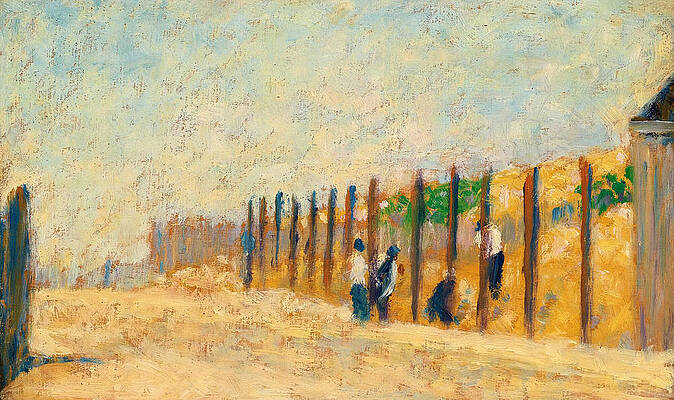
Workers Driving Piles

Terrassiers, The Stone Breakers

Sunset

Man With A Hoe

Study For Le Bec Du Hoc. Grandcamp
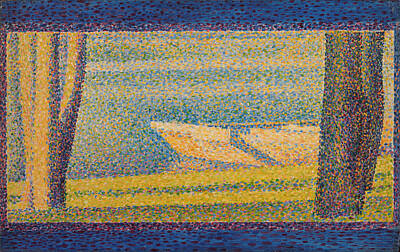



The Channel At Gravelines. Evening



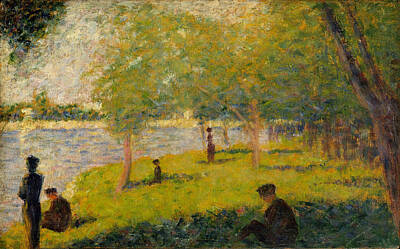
Study For A Sunday On La Grande Jatte





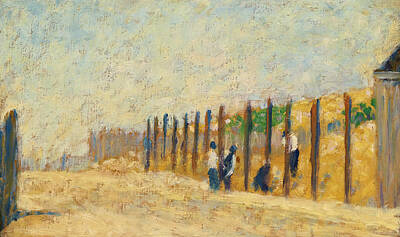




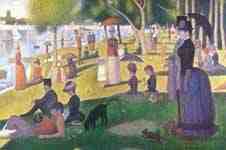
Sunday Afternoon on the Island of La Grande Jatte
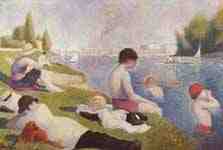
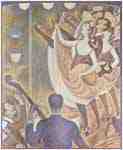
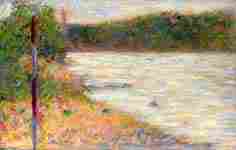
A River Bank (The Seine at Asnières)
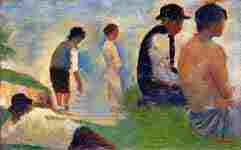
Study for 'Bathers at Asnières'

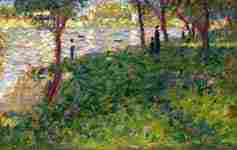
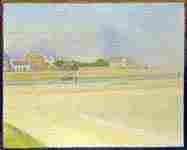
The Channel of Gravelines, Grand Fort-Philippe


The Rainbow - Study for 'Bathers at Asnières'
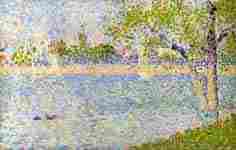
The Seine seen from La Grande Jatte
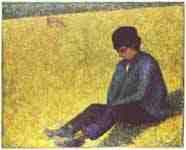
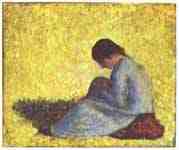
On a meadow sitting farmer girl
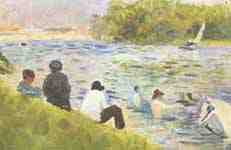
Bathers and white horse in the river
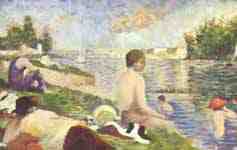

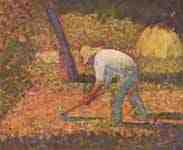
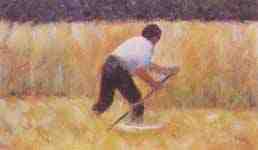

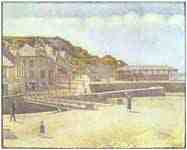
Bridge and Port of Port-en-Bessin
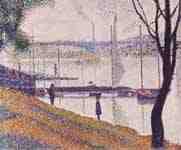
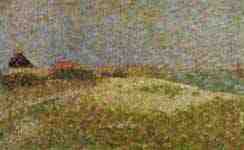
The Fort Samson in Grand Camp , sketch
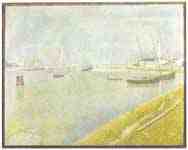
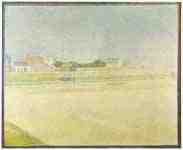
The Channel of Gravelines , Grand Fort-Philippe
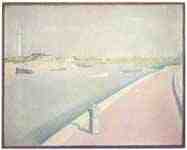
The Channel of Gravelines , Petit- Fort-Philippe
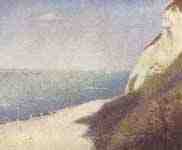
The beach » Le Bas Butin " in Honfleur
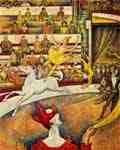

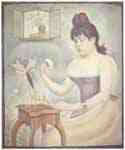
The woman with the powder puff

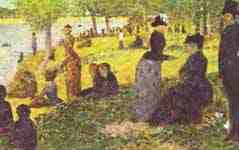
The island of La Grande Jatte with excursionists
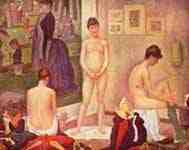

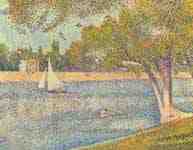
The Seine at the Grand Jatte , Spring

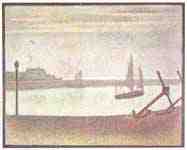
An evening at the port of Gravelines
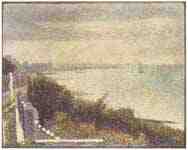
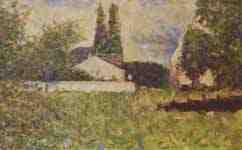
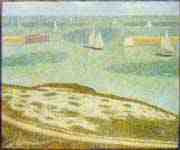
Entrance to the harbor of Port-en-Bessin
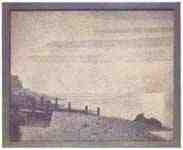
Embouchure de la Seine à Honfleur, soir
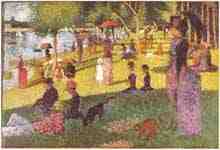
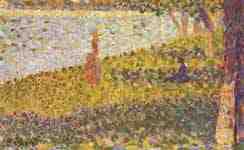


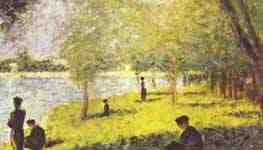
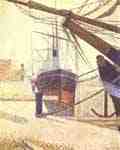

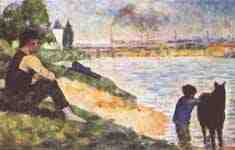
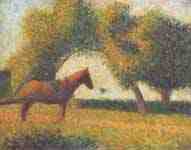

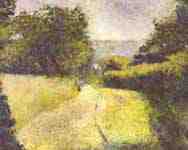
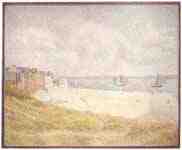
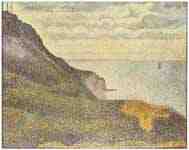
Les Grues et la percée à Port-en- Bessin
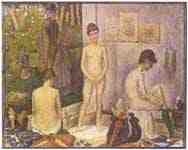
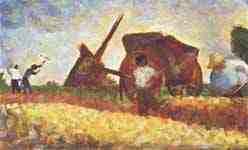
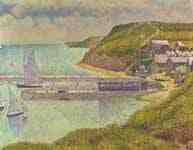
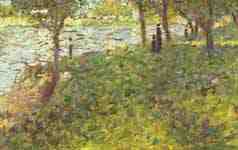
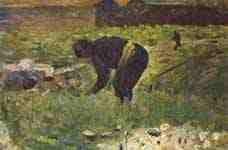
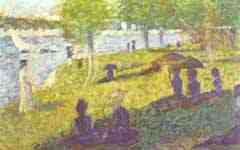

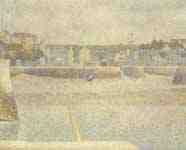
Port-en- Bessin , The Outer harbor at low last tide
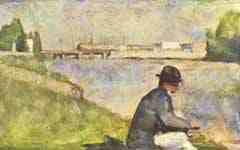


Standing model (Study for " Les Poseuses " )
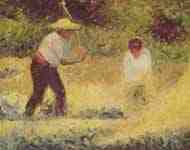

Stone Breaker with wheelbarrow
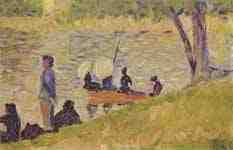
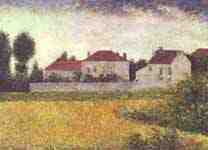
Ville d' Avray , The white houses
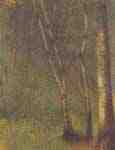
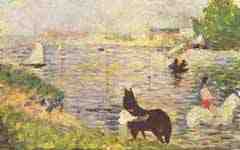
White and black horse in the river
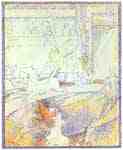

Drawings

Portrait Of Edmond Francois Aman-jean
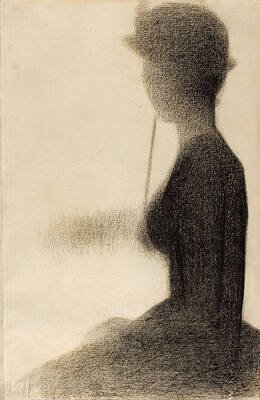
Seated Woman With A Parasol. Study For La Grande Jatte






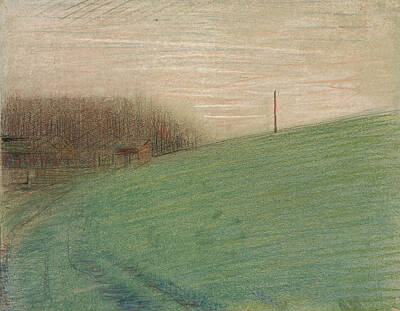

Woman With Two Girls
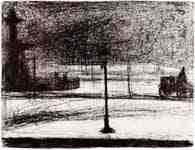
» Place de la Concorde " in snow and darkness
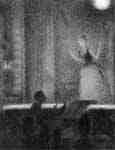
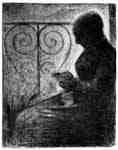
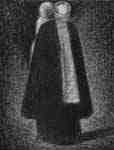
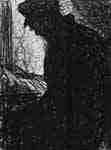
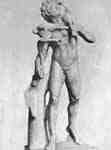
Antique statue : satyr with goat
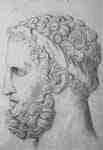
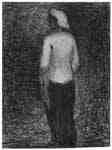

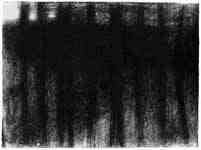
Trunks of trees , reflecting in the water
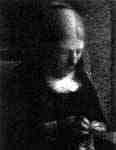
Embroidering ( Portrait of mother )

Looking through the balcony railing
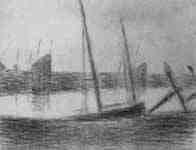
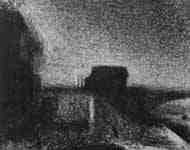
Bridge approach of the Pont de Courbevoie
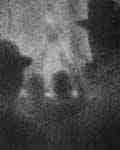

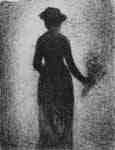
Lady with flowers , seen from the back
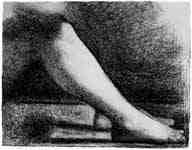
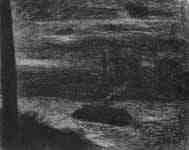
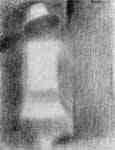

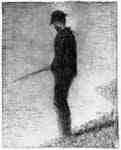



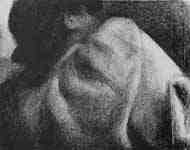

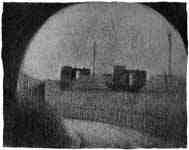
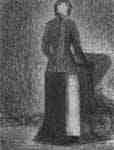


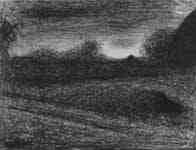
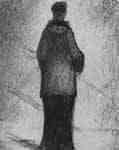
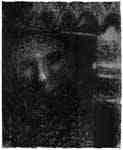
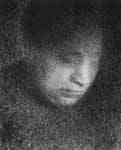
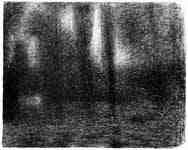
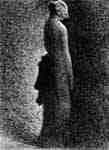
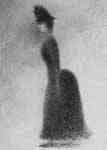
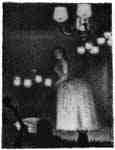
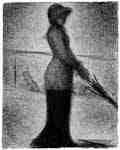



Figure studies
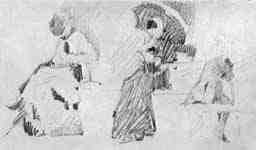


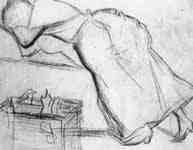
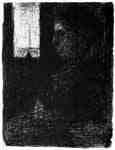



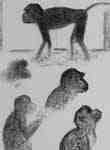

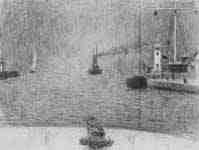

Hand study ( The Hand of Poussin )
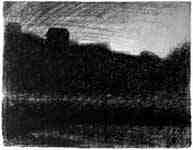
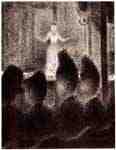
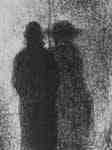
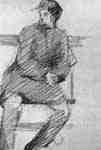
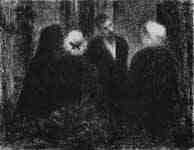
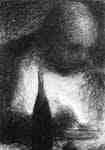
Le Dineur ( Portrait of the Father )
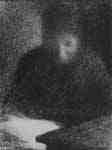
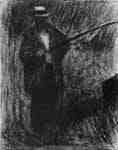



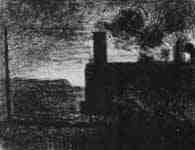
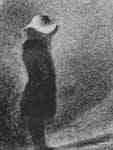
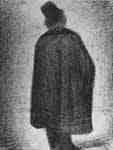
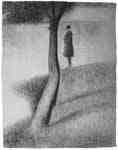

male Nude
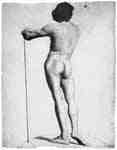
Male back nude , leaning on a staff
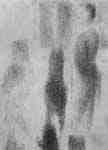
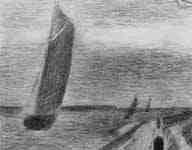
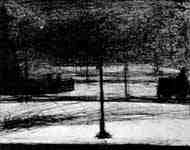
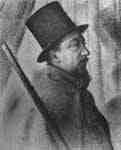

Regatta (" La Grenouillière " )
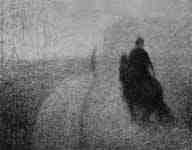
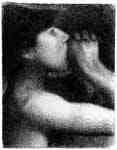



Seated woman seen from the back
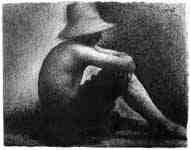


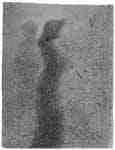
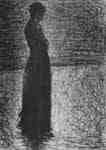
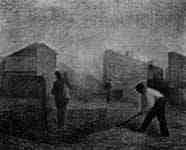

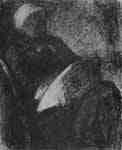
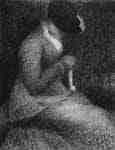

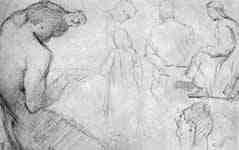
Study sheet with figure of a grape pressing Satyrs (after Poussin ) and other figures
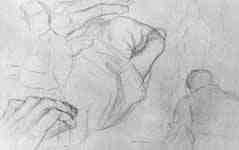
Study sheet with soldiers and hand and figure studies
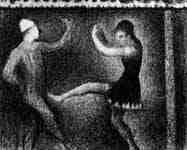
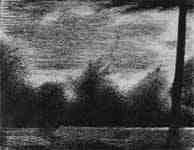
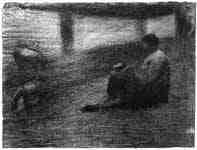
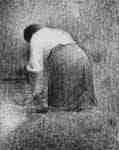
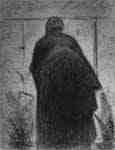
Female figure from behind , leaning forward
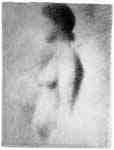
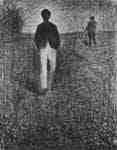
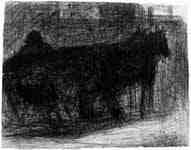
Fine Art Prints | Greeting Cards | iPhone Cases | Tote Bags | Clothing | Lifestyle | Beach ...

Georges-Pierre Seurat (French: [ʒɔʁʒ pjɛʁ sœʁa];[1] 2 December 1859 – 29 March 1891) was a French post-Impressionist painter and draftsman. He is noted for his innovative use of drawing media and for devising the painting techniques known as chromoluminarism and pointillism. Seurat's artistic personality was compounded of qualities which are usually supposed to be opposed and incompatible: on the one hand, his extreme and delicate sensibility; on the other, a passion for logical abstraction and an almost mathematical precision of mind.[2] His large-scale work, A Sunday Afternoon on the Island of La Grande Jatte (1884–1886), altered the direction of modern art by initiating Neo-impressionism, and is one of the icons of late 19th-century painting.[3]
Biography
Georges Seurat, 1889–90, Le Chahut, oil on canvas, 170 x 141 cm, Kröller-Müller Museum, Otterlo
Family and education
Seurat was born on the 2 December 1859 in Paris, at 60 rue de Bondy (now rue René Boulanger). The Seurat family moved to 136 boulevard de Magenta (now 110 boulevard de Magenta) in 1862 or 1863.[4] His father, Antoine Chrysostome Seurat, originally from Champagne, was a former legal official who had become wealthy from speculating in property, and his mother, Ernestine Faivre, was from Paris.[5] Georges had a brother, Émile Augustin, and a sister, Marie-Berthe, both older. His father lived in Le Raincy and visited his wife and children once a week at boulevard de Magenta.[6]
Georges Seurat first studied art at the École Municipale de Sculpture et Dessin, near his family's home in the boulevard Magenta, which was run by the sculptor Justin Lequien.[7][8] In 1878 he moved on to the École des Beaux-Arts where he was taught by Henri Lehmann, and followed a conventional academic training, drawing from casts of antique sculpture and copying drawings by old masters.[7] Seurat's studies resulted in a well-considered and fertile theory of contrasts: a theory to which all his work was thereafter subjected.[9] His formal artistic education came to an end in November 1879, when he left the École des Beaux-Arts for a year of military service.[8]
After a year at the Brest Military Academy, he returned to Paris where he shared a studio with his friend Aman-Jean, while also renting a small apartment at 16 rue de Chabrol.[5] For the next two years, he worked at mastering the art of monochrome drawing. His first exhibited work, shown at the Salon, of 1883, was a Conté crayon drawing of Aman-Jean.[10] He also studied the works of Eugène Delacroix carefully, making notes on his use of color.[7]
Bathers at Asnières
He spent 1883 working on his first major painting—a large canvas titled Bathers at Asnières,[11] a monumental work showing young men relaxing by the Seine in a working-class suburb of Paris.[12] Although influenced in its use of color and light tone by Impressionism, the painting with its smooth, simplified textures and carefully outlined, rather sculptural figures, shows the continuing impact of his neoclassical training; the critic Paul Alexis described it as a "faux Puvis de Chavannes".[13] Seurat also departed from the Impressionist ideal by preparing for the work with a number of drawings and oil sketches before starting on the canvas in his studio.[13]
Bathers at Asnières was rejected by the Paris Salon, and instead he showed it at the Groupe des Artistes Indépendants in May 1884. Soon, however, disillusioned by the poor organisation of the Indépendants, Seurat and some other artists he had met through the group – including Charles Angrand, Henri-Edmond Cross, Albert Dubois-Pillet and Paul Signac – set up a new organisation, the Société des Artistes Indépendants.[11] Seurat's new ideas on pointillism were to have an especially strong influence on Signac, who subsequently painted in the same idiom.
A Sunday Afternoon on the Island of La Grande Jatte
A Sunday Afternoon on the Island of La Grande Jatte, 1884–86, oil on canvas, 207.5 × 308.1 cm, Art Institute of Chicago
In the summer of 1884, Seurat began work on A Sunday Afternoon on the Island of La Grande Jatte, which took him two years to complete.
The painting shows members of each of the social classes participating in various park activities. The tiny juxtaposed dots of multi-colored paint allow the viewer's eye to blend colors optically, rather than having the colors physically blended on the canvas. It took Seurat two years to complete this 10-foot-wide (3.0 m) painting, much of which he spent in the park sketching in preparation for the work (there are about 60 studies). It is now in the permanent collection of the Art Institute of Chicago.
Seurat made several studies for the large painting including a smaller version, Study for A Sunday Afternoon on the Island of La Grande Jatte (1884–1885), now in the collection of the Metropolitan Museum of Art, in New York City.[14]
The painting was the inspiratio
n for James Lapine and Stephen Sondheim's musical, Sunday in the Park with George.
Later career
Jeune femme se poudrant (Young Woman Powdering Herself), 1888–90, oil on canvas, 95.5 x 79.5 cm, Courtauld Institute of Art
Seurat concealed his relationship with Madeleine Knobloch (or Madeleine Knoblock, 1868–1903), an artist's model whom he portrayed in his painting Jeune femme se poudrant. In 1889 she moved in with Seurat in his studio on the 7th floor of 128bis Boulevard de Clichy.[15]
When Madeleine became pregnant, the couple moved to a studio at 39 passage de l'Élysée-des-Beaux-Arts (now rue André Antoine). There she gave birth to their son, who was named Pierre-Georges, 16 February 1890.[15]
Seurat spent the summer of 1890 on the coast at Gravelines, where he painted four canvases including The Channel of Gravelines, Petit Fort Philippe, as well as eight oil panels, and made a few drawings.[16]
Death
Seurat died in Paris in his parents' home on 29 March 1891 at the age of 31.[4] The cause of his death is uncertain, and has been variously attributed to a form of meningitis, pneumonia, infectious angina, and diphtheria. His son died two weeks later from the same disease.[17] His last ambitious work, The Circus, was left unfinished at the time of his death.
30 March 1891 a commemorative service was held in the church of Saint-Vincent-de-Paul.[4] Seurat was interred 31 March 1891 at Cimetière du Père-Lachaise.[6]
At the time of Seurat's death, Madeleine was pregnant with a second child who died during or shortly after birth.[18]
Color theory
Contemporary ideas
Detail from Circus Sideshow (Parade de Cirque) (1889) showing pointillism and color theory
During the 19th century, scientist-writers such as Michel Eugène Chevreul, Ogden Rood and David Sutter wrote treatises on color, optical effects and perception. They adapted the scientific research of Hermann von Helmholtz and Isaac Newton into a form accessible to laypeople. Artists followed new discoveries in perception with great interest.
Chevreul was perhaps the most important influence on artists at the time; his great contribution was producing a color wheel of primary and intermediary hues. Chevreul was a French chemist who restored tapestries. During his restorations he noticed that the only way to restore a section properly was to take into account the influence of the colors around the missing wool; he could not produce the right hue unless he recognized the surrounding dyes. Chevreul discovered that two colors juxtaposed, slightly overlapping or very close together, would have the effect of another color when seen from a distance. The discovery of this phenomenon became the basis for the pointillist technique of the Neoimpressionist painters.
Chevreul also realized that the "halo" that one sees after looking at a color is the opposing color (also known as complementary color). For example: After looking at a red object, one may see a cyan echo/halo of the original object. This complementary color (as an example, cyan for red) is due to retinal persistence. Neoimpressionist painters interested in the interplay of colors made extensive use of complementary colors in their paintings. In his works, Chevreul advised artists to think and paint not just the color of the central object, but to add colors and make appropriate adjustments to achieve a harmony among colors. It seems that the harmony Chevreul wrote about is what Seurat came to call "emotion".
It is not clear whether Seurat read all of Chevreul's book on color contrast, published in 1859, but he did copy out several paragraphs from the chapter on painting, and he had read Charles Blanc's Grammaire des arts du dessin (1867),[7] which cites Chevreul's work. Blanc's book was directed at artists and art connoisseurs. Because of color's emotional significance to him, he made explicit recommendations that were close to the theories later adopted by the Neoimpressionists. He said that color should not be based on the "judgment of taste", but rather it should be close to what we experience in reality. Blanc did not want artists to use equal intensities of color, but to consciously plan and understand the role of each hue in creating a whole.
While Chevreul based his theories on Newton's thoughts on the mixing of light, Ogden Rood based his writings on the work of Helmholtz. He analyzed the effects of mixing and juxtaposing material pigments. Rood valued as primary colors red, green, and blue-violet. Like Chevreul, he said that if two colors are placed next to each other, from a distance they look like a third distinctive color. He also pointed out that the juxtaposition of primary hues next to each other would create a far more intense and pleasing color, when perceived by the eye and mind, than the corresponding color made simply by mixing paint. Rood advised artists to be aware of the difference between additive and subtractive qualities of color, since material pigments and optical pigments (light) do not mix in the same way:
Material pigments: Red + Yellow + Blue = Black
Optical / Light : Red + Green + Blue = White
Seurat was also influenced by Sutter's Phenomena of Vision (1880), in which he wrote that "the laws of harmony can be learned as one learns the laws of harmony and music".[19] He heard lectures in the 1880s by the mathematician Charles Henry at the Sorbonne, who discussed the emotional properties and symbolic meaning of lines and color. There remains controversy over the extent to which Henry's ideas were adopted by Seurat.[20]
The language of color
Seurat took to heart the color theorists' notion of a scientific approach to painting. He believed that a painter could use color to create harmony and emotion in art in the same way that a musician uses counterpoint and variation to create harmony in music. He theorized that the scientific application of color was like any other natural law, and he was driven to prove this conjecture. He thought that the knowledge of perception and optical laws could be used to create a new language of art based on its own set of heuristics and he set out to show this language using lines, color intensity and color schema. Seurat called this language Chromoluminarism.
In a letter to the writer Maurice Beaubourg in 1890 he wrote: "Art is Harmony. Harmony is the analogy of the contrary and of similar elements of tone, of colour and of line. In tone, lighter against darker. In colour, the complementary, red-green, orange-blue, yellow-violet. In line, those that form a right-angle. The frame is in a harmony that opposes those of the tones, colours and lines of the picture, these aspects are considered according to their dominance and under the influence of light, in gay, calm or sad combinations".[21][22]
Seurat's theories can be summarized as follows: The emotion of gaiety can be achieved by the domination of luminous hues, by the predominance of warm colors, and by the use of lines directed upward. Calm is achieved through an equivalence/balance of the use of the light and the dark, by the balance of warm and cold colors, and by lines that are horizontal. Sadness is achieved by using dark and cold colors and by lines pointing downward.
Influence
Where the dialectic nature of Paul Cézanne's work had been greatly influential during the highly expressionistic phase of proto-Cubism, between 1908 and 1910, the work of Seurat, with its flatter, more linear structures, would capture the attention of the Cubists from 1911.[23] Seurat in his few years of activity, was able, with his observations on irradiation and the effects of contrast, to create afresh without any guiding tradition, to complete an esthetic system with a new technical method perfectly adapted to its expression.[24]
"With the advent of monochromatic Cubism in 1910–1911," writes art historian Robert Herbert, "questions of form displaced color in the artists' attention, and for these Seurat was more relevant. Thanks to several exhibitions, his paintings and drawings were easily seen in Paris, and reproductions of his major compositions circulated widely among the Cubists. The Chahut [Rijksmuseum Kröller-Müller, Otterlo] was called by André Salmon 'one of the great icons of the new devotion', and both it and the Cirque (Circus), Musée d'Orsay, Paris, according to Guillaume Apollinaire, 'almost belong to Synthetic Cubism'."[20]
The concept was well established among the French artists that painting could be expressed mathematically, in terms of both color and form; and this mathematical expression resulted in an independent and compelling "objective truth", perhaps more so than the objective truth of the object represented.[23]
Indeed, the Neo-Impressionists had succeeded in establishing an objective scientific basis in the domain of color (Seurat addresses both problems in Circus and Dancers). Soon, the Cubists were to do so in both the domain of form and dynamics; Orphism would do so with color too.[23]
Exhibitions
Portrait of Edmond Aman-Jean, shown at the 1883 Salon
From 1883 until his death, Seurat exhibited his work at the Salon, the Salon des Indépendants, Les XX in Brussels, the eighth Impressionist exhibition, and various other exhibitions in France and abroad.[25]
Salon, Paris, 1 May–20 June 1883
The Salon showed Seurat's drawing of Edmond Aman-Jean.
Salon des Indépendants, Paris, 15 May–30 June 1884
Seurat showed Une Baignade, Asnières, after the official Salon had rejected it. Seurat's debut as a painter.
Salon des Indépendants, Paris, 10 December 1884 – 17 January 1885
Works in Oil and Pastel by the Impressionists of Paris, American Art Association, New York, April and May 1886.
Organised by Paul Durand-Ruel.
Impressionist exhibition, Paris, 15 May–15 June 1886
Un dimanche après-midi à l'Île de la Grande Jatte shown for the first time.
Salon des Indépendants, Paris, 21 August–21 September 1886
Les impressionnistes, Palais du Cours Saint-André, Nantes, 10 October 1886 – 15 January 1887
Galerie Martinet, Paris, December 1886 – January 1887
Les XX, Brussels, February 1887
Salon des Indépendants, Paris, 26 March–3 May 1887
Théâtre Libre, Paris, November 1887 – January 1888
Works by Seurat, Signac and van Gogh.
Exposition de Janvier, La Revue indépendante, Paris, January 1888
Exposition de Février, La Revue indépendante, Paris, February 1888
Hôtel Drouot, Paris, 1–3 March 1888 (sales exhibition)
Salon des Indépendants, Paris, 22 March–3 May 1888
Tweede Jaarlijksche Tentoonstelling der Nederlandsche Etsclub, Arti et Amicitiae, Amsterdam, June 1888
Drawing Au café concert, lent by Theo van Gogh.
Les XX, Brussels, February 1889
Salon des Indépendants, Paris, 3 September–4 October 1889
Salon des Indépendants, Paris, 20 March–27 April 1890
Showed Le Chahut, Jeune femme se poudrant and 9 other works.
Les XX, Brussels, 7 February–8 March 1891
Showed Le Chahut and 6 other paintings.
Salon des Indépendants, Paris, 20 March–27 April 1891
Showed Le Cirque and four paintings from Gravelines.
Posthumous exhibitions:
Solomon R. Guggenheim Collection of Non-Objective Paintings, South Carolina, 1938, Gibbes Memorial Art Gallery[26]
See also
iconArts portal
Post-Impressionism
Pointillism
History of painting
References
Notes
"Seurat", Random House Webster's Unabridged Dictionary
Fry, Roger Essay, 'The Dial', Camden, New Jersey, September 1926
"Art Institute of Chicago". Artic.edu. Retrieved 13 March 2014.
Seurat: p. 16
Georges Seurat, 1859–1891 1991, p. 11.
Seurat: p. 17
Kirby, Jo; Stonor, Kate; Burnstock, Aviva; Grout, Rachel;Roy, Ashok and White, Raymond (2003). "Seurat's painting Practice: Theory, Development and Technology". National Gallery Technical Bulletin. 24.
Georges Seurat, 1859–1891 1991, p. 12.
Signac, Paul Brief Survey, in Revue Blanche Paris 1899
Georges Seurat, 1859–1891 1991, p. 48.
Georges Seurat, 1859–1891 1991, p. 148.
Georges Seurat, 1859–1891 1991, p. 150.
Georges Seurat, 1859–1891 1991, p. 147–8.
Heilbrunn Timeline of Art History Retrieved 25 April 2010
Seurat: pp. 18–22
Georges Seurat, 1859–1891 1991, p. 360.
"''Death of Seurat'', CDC". Cdc.gov. 14 April 2011. Retrieved 13 March 2014.
Seurat: p. 18
Hunter, Sam (1992). "Georges Seurat". Modern Art. New York: Harry N. Abrams. p. 27.
Herbert, Robert L., Neo-impressionism, New York, Solomon R. Guggenheim Foundation, 1968
''Art of the 20th Century'', Karl Ruhrberg. Books.google.com. Retrieved 13 March 2014.
Letter to the writer Maurice Beaubourg, 28 August 1890, Seurat Phaidon Press, London, 1965
Alex Mittelmann, State of the Modern Art World, The Essence of Cubism and its Evolution in Time, 2011
Fry, Roger Essay in The Dial, Camden, New Jersey, September 1926.
Works exhibited by Georges Seurat. In Seurat, pp. 121–130.
"Guggenheim Museum". guggenheim.org.
Sources
Georges Seurat, 1859–1891. New York: Metropolitan Museum of Art. 1991. ISBN 9780870996184.
Jooren, Marieke; Veldink, Suzanne; Berger, Helewise (2014). Seurat. Kröller-Müller Museum. ISBN 9789073313286.
Further reading
Cachin, Françoise, Seurat: Le rêve de l’art-science, Paris: Gallimard/Réunion des musées nationaux, 1991
Everdell, William R. (1998). The First Moderns. Chicago: University of Chicago Press. ISBN 0-226-22480-5.
Fénéon, Félix, Oeuvres-plus-que-complètes, ed., J. U. Halperin, 2v, Geneva: Droz, 1970
Fry Roger Essay, 'The Dial' Camden, N.J Sept. 1926
Gage, John T., "The Technique of Seurat: A Reappraisal,” Art Bulletin 69:3 (87 September)
Halperin, Joan Ungersma, Félix Fénéon: Aesthete and Anarchist in Fin-de-Siècle Paris, New Haven, CT: Yale University Press, 1988
Homer, William Innes, Seurat and the Science of Painting, Cambridge, MA: MIT Press, 1964
Lövgren, Sven, The Genesis of Modernism: Seurat, Gauguin, Van Gogh & French Symbolism in the 1880s, 2nd ed., Bloomington, IN: Indiana University Press, 1971
Rewald, John, Cézanne, new ed., NY: Abrams, 1986
Rewald, Seurat, NY: Abrams, 1990
Rewald, Studies in Impressionism, NY: Harry N. Abrams, 1986
Rewald, Post-Impressionism, 3rd ed., revised, NY: Museum of Modern Art, 1978
Rewald, Studies in Post-Impressionism, NY: Harry N. Abrams, 1986
Rich, Daniel Catton, Seurat and the Evolution of La Grande Jatte (University of Chicago Press, 1935), NY: Greenwood Press, 1969
Russell, John, Seurat, (1965) London: Thames & Hudson, 1985
Seurat, Georges, Seurat: Correspondences, témoignages, notes inédites, critiques, ed., Hélène Seyrès, Paris: Acropole, 1991 (NYU ND 553.S5A3)
Seurat, ed., Norma Broude, Seurat in Perspective, Englewood Cliffs, NJ: Prentice-Hall, 1978
Smith, Paul, Seurat and the Avant-Garde, New Haven, CT: Yale University Press, 1997
----
Fine Art Prints | Greeting Cards | Phone Cases | Lifestyle | Face Masks | Men's , Women' Apparel | Home Decor | jigsaw puzzles | Notebooks | Tapestries | ...
----
Artist
A - B - C - D - E - F - G - H - I - J - K - L - M -
N - O - P - Q - R - S - T - U - V - W - X - Y - Z
Retrieved from "http://en.wikipedia.org/"
All text is available under the terms of the GNU Free Documentation License


